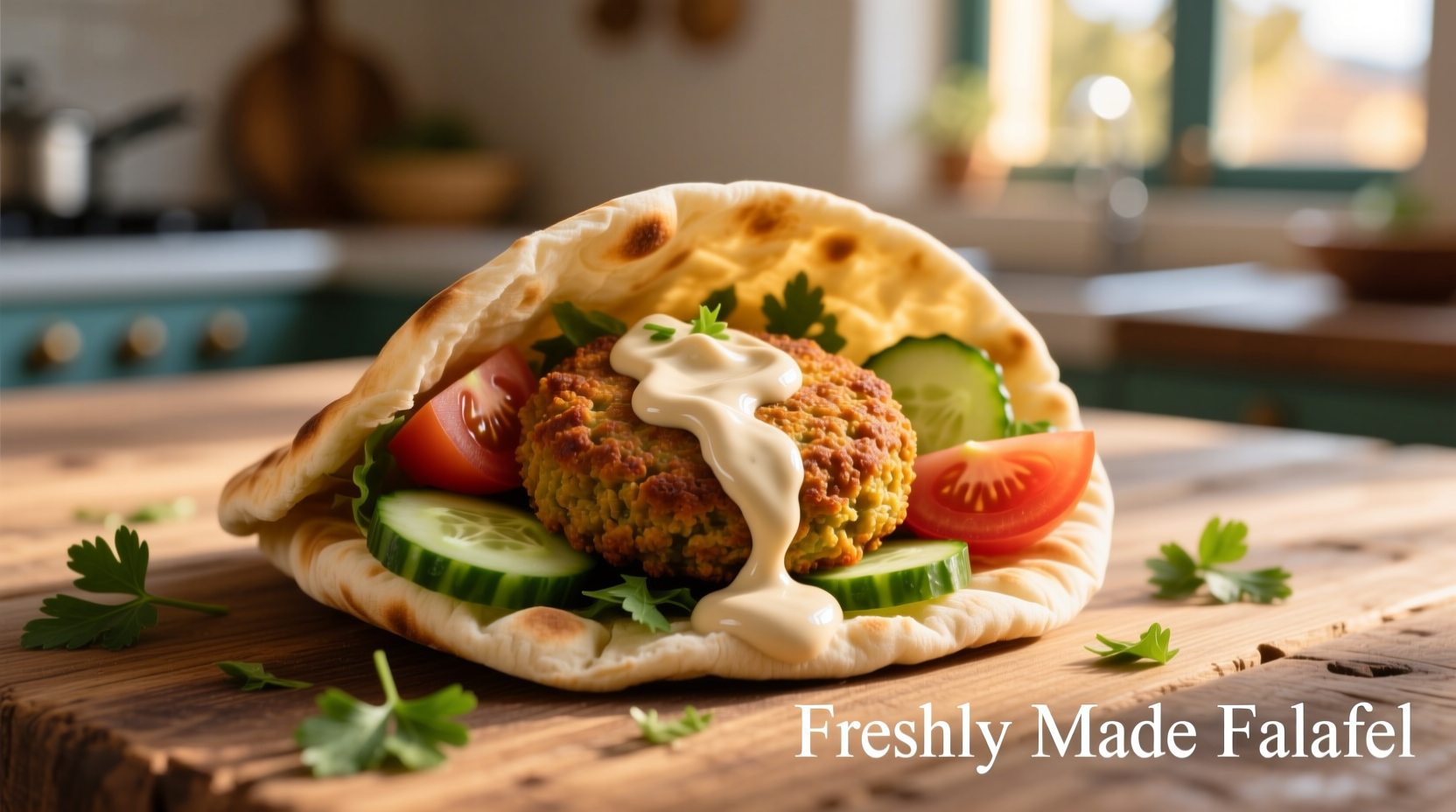If you've ever wondered what does falafel taste like, you're in for a sensory journey. This beloved Middle Eastern street food combines earthy legumes with bright herbs and warm spices to create a flavor experience that's simultaneously familiar and exotic. Properly made falafel shouldn't taste overly greasy or bland—it should offer a harmonious balance of textures and flavors that has made it a global favorite for centuries.
The Core Flavor Profile of Authentic Falafel
Falafel's distinctive taste comes from its carefully balanced ingredients. Traditional recipes use either soaked chickpeas (Levantine style) or fava beans (Egyptian style), ground with fresh herbs and spices. The primary flavor components include:
- Earthy base: From chickpeas or fava beans, providing a nutty, slightly sweet foundation
- Herbal brightness: Fresh parsley and cilantro contribute grassy, citrusy notes
- Warm spices: Cumin and coriander add depth without overwhelming heat
- Garlic punch: Raw garlic provides aromatic sharpness that mellows when fried
- Onion undertones: Often included for subtle sweetness and complexity
Unlike many fried foods, quality falafel shouldn't taste oily. Instead, the high-heat frying creates a flavorful crust that seals in moisture while allowing the interior herbs to shine through. The texture contrast between the crispy exterior and tender interior significantly enhances the overall taste experience.

How Regional Variations Affect Falafel Flavor
Falafel isn't a one-size-fits-all food—regional differences dramatically impact its taste profile. The choice between chickpeas and fava beans creates fundamentally different flavor experiences that reflect local traditions and ingredient availability.
| Regional Style | Primary Bean | Flavor Characteristics | Texture Profile |
|---|---|---|---|
| Egyptian | Fava beans | Milder, earthier, less herbal | Softer, more delicate |
| Levantine (Lebanon, Syria, Palestine) | Chickpeas | Bolder herbal notes, more garlic | Firmer, crispier exterior |
| Israeli | Chickpeas (sometimes mixed) | Stronger spice profile, brighter herbs | Consistently crispy throughout |
According to culinary research documented by the Encyclopædia Britannica, these regional variations developed based on historical agricultural practices and trade routes. Egyptian falafel's fava bean base reflects the Nile Valley's long history of fava cultivation, while chickpea-based versions became dominant further north where chickpeas thrived.
Texture's Crucial Role in Falafel Taste Perception
What does falafel taste like depends significantly on texture. The ideal falafel features a golden-brown, shatteringly crisp exterior that gives way to a moist, tender interior with visible flecks of green herbs. This textural contrast creates a more complex eating experience than either extreme:
- Overly dense falafel tastes heavy and bean-forward without herbal brightness
- Excessively oily falafel overwhelms other flavors with greasiness
- Undercooked falafel has raw bean flavor and unpleasant mealiness
- Perfectly cooked falafel balances crispness with herbal freshness
The texture directly impacts how your palate experiences the flavor compounds. A crisp exterior creates an initial satisfying crunch that releases aromatic compounds, while the tender interior allows the herbal and spice notes to gradually unfold on your tongue.
Traditional Accompaniments That Transform Falafel Flavor
While falafel has distinctive flavor on its own, traditional serving methods significantly enhance and balance its taste profile. The complete falafel experience involves strategic pairings that complement its earthy base:
- Tahini sauce: This sesame paste sauce provides creamy richness with tangy lemon notes that cut through the earthiness
- Arugula or parsley: Adds peppery freshness that contrasts with the warm spices
- pickles: Offers acidity that brightens the entire flavor profile
- Pita bread: Provides neutral starch that absorbs excess oil while adding textural contrast
Food scientists at the Journal of Food Science note that the combination of tahini's fatty acids with falafel's herbal compounds creates flavor synergies that enhance overall palatability. The lemon in tahini specifically interacts with cumin compounds to create brighter flavor notes.
When Falafel Might Taste Different Than Expected
Several factors can significantly alter what falafel tastes like, creating unexpected flavor experiences:
- Ingredient substitutions: Many Western versions use canned chickpeas instead of soaked dried beans, resulting in blander flavor and mushier texture
- Cooking method: Baked falafel lacks the complex Maillard reaction flavors developed through proper deep-frying
- Herb proportions: Too little parsley/cilantro creates overwhelmingly beany flavor; too much makes it taste like herb patties
- Freshness factor: Falafel is best eaten immediately—stale falafel develops unpleasant rancidity from oxidized oils
Understanding these variables helps explain why your falafel experience might differ from what's described in authentic Middle Eastern contexts. Traditional preparation methods using soaked dried legumes, fresh herbs, and proper frying technique create the distinctive flavor profile that has made falafel a culinary staple for generations.
Experiencing Authentic Falafel Flavor at Home
To truly understand what does falafel taste like, consider these tips for authentic preparation:
- Use dried chickpeas or fava beans soaked overnight—never canned beans
- Maintain proper oil temperature (350-375°F) for optimal texture development
- Balance herbs at 30% of total mixture for proper flavor distribution
- Season with freshly ground spices rather than pre-mixed blends
- Serve immediately with freshly made tahini sauce for complete flavor experience
When prepared authentically, falafel delivers a complex flavor journey that begins with crispy texture, transitions to herbal brightness, and finishes with warm spice notes—all without overwhelming heat. This layered taste experience explains why falafel has maintained global popularity for centuries beyond its Middle Eastern origins.











 浙公网安备
33010002000092号
浙公网安备
33010002000092号 浙B2-20120091-4
浙B2-20120091-4